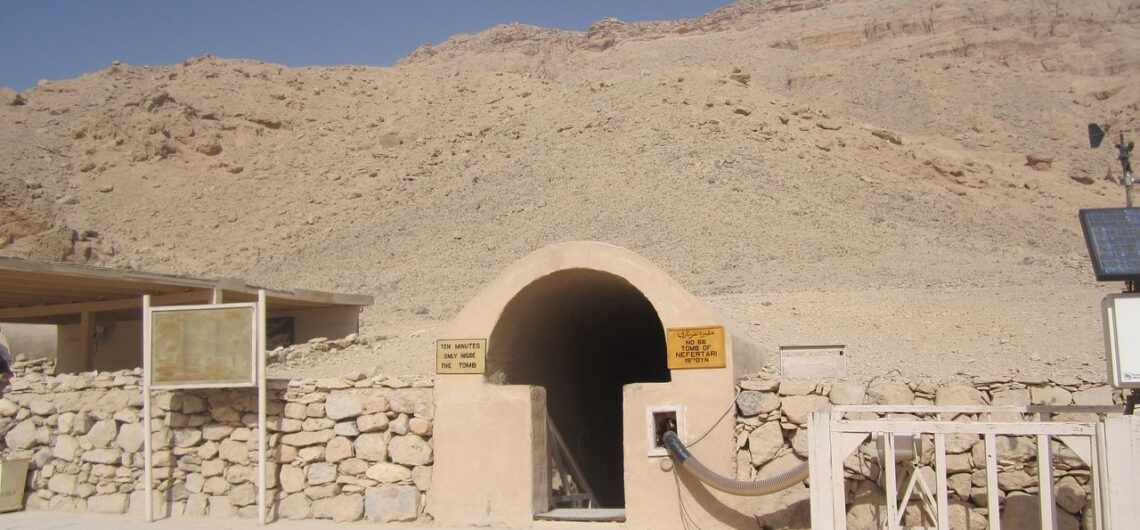Nestled along the timeless banks of the Nile River, the Luxor West Bank stands as a testament to the grandeur of ancient Egypt. Encompassing a wealth of archaeological wonders, this historic site has captured the imaginations of travelers and historians alike for centuries. From the awe-inspiring Valley of the Kings to the majestic Temple of Hatshepsut, the Luxor West Bank offers a glimpse into the opulence and mystique of Egypt’s illustrious past. In this article, we embark on a journey through the captivating treasures of the Luxor West Bank, exploring the monuments and narratives that make this archaeological marvel a must-visit destination.
Valley of the Kings: The Royal Necropolis
Arguably one of the most renowned archaeological sites in Egypt, the Valley of the Kings serves as the final resting place for numerous pharaohs and nobles of the New Kingdom. Carved into the rocky cliffs, the tombs within this royal necropolis contain intricately adorned chambers adorned with hieroglyphics, depicting scenes from the afterlife and the pharaohs’ journey to eternity.
Among the remarkable tombs in the Valley of the Kings is the tomb of Tutankhamun, the young pharaoh whose burial chamber, discovered by Howard Carter in 1922, unveiled an unparalleled trove of treasures. Visitors can explore this well-preserved tomb, marveling at the exquisite artifacts and paintings that provide insights into the beliefs and customs of ancient Egyptians.
Temple of Hatshepsut: A Monument to Female Pharaoh
Rising from the desert landscape like a grand architectural marvel, the Temple of Hatshepsut stands as a testament to the extraordinary reign of Queen Hatshepsut, one of ancient Egypt’s few female pharaohs. This mortuary temple, dedicated to the sun god Amon-Ra, is a masterpiece of ancient Egyptian architecture. Its elegant colonnades, terraced structure, and intricate reliefs depict the queen’s divine lineage and commemorate her achievements as a ruler.
Visitors to the Temple of Hatshepsut can wander through its majestic halls, marveling at the detailed carvings that adorn the walls. The temple’s dramatic setting against the backdrop of steep cliffs creates a mesmerizing scene, making it a favorite destination for photographers and history enthusiasts alike.
Colossi of Memnon: Guardians of Amenhotep III’s Temple
Greeting travelers as they approach the West Bank are the colossal statues of Amenhotep III, known as the Colossi of Memnon. These massive stone figures, representing the pharaoh seated on his throne, once adorned the entrance of Amenhotep III’s mortuary temple. Despite the temple’s partial destruction, these imposing statues have stood the test of time, bearing witness to centuries of history and change.
The Colossi of Memnon have captivated travelers since ancient times, with their sheer size and intriguing legends. According to Greek mythology, the statues were believed to sing at dawn, creating a phenomenon that drew curious visitors from far and wide. Though the singing phenomenon ceased long ago, the Colossi of Memnon remain as iconic symbols of ancient Egypt’s grandeur.
Deir el-Medina: The Workers’ Village
In the shadow of the Valley of the Kings lies the remarkable archaeological site of Deir el-Medina, an ancient village that was home to the craftsmen and workers responsible for constructing the royal tombs in the nearby valley. This unique settlement provides a rare glimpse into the daily lives of the skilled artisans who dedicated their expertise to building the pharaohs’ tombs.
The well-preserved ruins of Deir el-Medina include modest homes, workshops, and even a small temple. The village’s archaeological findings, including written records and personal artifacts, offer valuable insights into the social structure, religious practices, and familial bonds of the villagers. Exploring Deir el-Medina provides a fascinating glimpse into the lives of the unsung heroes behind Egypt’s monumental tombs.
Luxor West Bank: A Tapestry of History and Heritage
The Luxor West Bank is not merely a collection of ancient monuments; it is a living testament to the ingenuity, artistry, and spirituality of the ancient Egyptians. Each temple, tomb, and artifact tells a story, painting a vivid picture of a civilization that revered its pharaohs, worshipped its gods, and meticulously prepared for the afterlife.
Visiting the Luxor West Bank is not just a journey back in time; it is an opportunity to marvel at the architectural marvels, decipher hieroglyphic inscriptions, and contemplate the profound beliefs that guided ancient Egyptian society. It is a pilgrimage for history enthusiasts, archaeology aficionados, and anyone captivated by the enigmatic allure of ancient civilizations.
A Timeless Odyssey in Luxor West Bank
The Luxor West Bank is a treasure trove of archaeological wonders, offering travelers a profound and immersive experience in the heart of ancient Egypt. Its temples, tombs, and monuments are not merely relics of the past but windows into a world of unparalleled craftsmanship, devotion, and cultural richness.
A journey through the Luxor West Bank is a journey through the annals of human history, a voyage that transcends time and space. It is an odyssey that invites travelers to explore the mysteries of the pharaohs, decipher the stories etched in stone, and witness the enduring legacy of one of the world’s most magnificent civilizations. For those who seek to unravel the secrets of the past and be enchanted by the grandeur of ancient Egypt, the Luxor West Bank beckons, promising an unforgettable odyssey through the sands of time.

